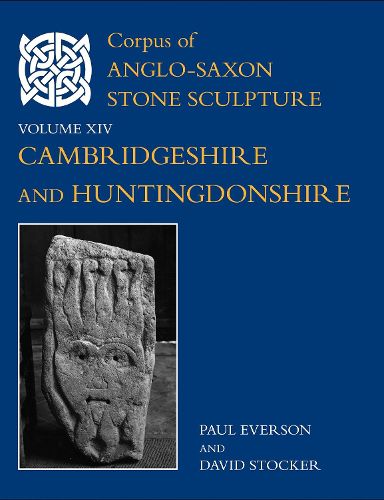Readings Newsletter
Become a Readings Member to make your shopping experience even easier.
Sign in or sign up for free!
You’re not far away from qualifying for FREE standard shipping within Australia
You’ve qualified for FREE standard shipping within Australia
The cart is loading…






Corpus of Anglo-Saxon Sculpture, XIV, Cambridgeshire and Huntingdonshire surveys the counties of Cambridgeshire and Huntingdonshire with a substantial catalogue of all known pre-Conquest stone sculpture, illustrated by high-quality photographs, maps, and interpretive drawings. A series of introductory chapters explore such topics as the history of previous scholarship, the geological and historical background, plus a detailed analysis of the new information afforded by these major survivals of Anglo-Saxon art and archaeology. Stocker and Everson conclude that the great majority of stone sculpture from these two counties belongs to the final century of Anglo-Saxon England, during which period they were rapidly expanding ecclesiastical societies, and deeply influenced by the great monasteries of Peterborough and Ely. The quantity of eleventh-century material permits an analysis of the impact of the Norman conquest on aspects of social, ecclesiastical, and cultural life, which is a running theme through the narrative.
$9.00 standard shipping within Australia
FREE standard shipping within Australia for orders over $100.00
Express & International shipping calculated at checkout
Corpus of Anglo-Saxon Sculpture, XIV, Cambridgeshire and Huntingdonshire surveys the counties of Cambridgeshire and Huntingdonshire with a substantial catalogue of all known pre-Conquest stone sculpture, illustrated by high-quality photographs, maps, and interpretive drawings. A series of introductory chapters explore such topics as the history of previous scholarship, the geological and historical background, plus a detailed analysis of the new information afforded by these major survivals of Anglo-Saxon art and archaeology. Stocker and Everson conclude that the great majority of stone sculpture from these two counties belongs to the final century of Anglo-Saxon England, during which period they were rapidly expanding ecclesiastical societies, and deeply influenced by the great monasteries of Peterborough and Ely. The quantity of eleventh-century material permits an analysis of the impact of the Norman conquest on aspects of social, ecclesiastical, and cultural life, which is a running theme through the narrative.